Limerick is one of Ireland’s oldest cities and was founded by the Vikings in AD 812. It is in the Munster province and is the fourth most populated city in Ireland.
Limerick and the surrounding county is home to several attractions and areas of natural beauty. Fabulous structures such as King John’s Castle and St Mary’s Cathedral are not far from beauty spots such as Lough Gur and the Ballyhoura Mountains.
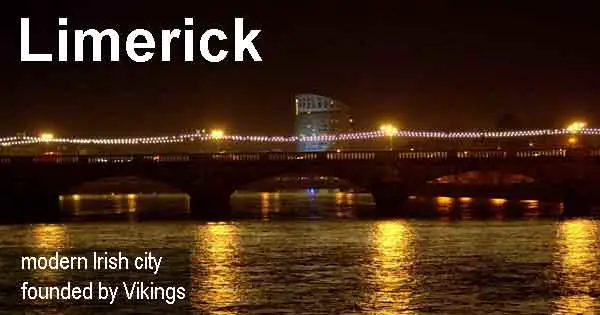
Other popular attractions include the Treaty Stone, the Limerick City Museum, the Hunt Museum and St John’s Cathedral.
Areas of the city
Limerick is divided into two traditional areas. There is the ‘Irish town’ which is the older part of the city including the streets on the Southbank and the Newton Perry area.
The Newton Perry covers much of the city centre and is known for its Georgian architecture. One of the roads famous for its Georgian architecture is O’Connell Street, which was known as George Street before Ireland gained its independence.
The second section is the ‘English town’ which covers the southern end of King’s Island and King John’s Castle.
Early days of Limerick
The Vikings set up a settlement on the River Shannon. The area appealed to the Vikings as it gave them quick and easy access to the ocean which made it a useful trading port.
The Vikings initially named the town ‘Hlymrekr’, it would eventually become the city of Limerick.
In AD 977, a young Irish king, Brian Boru of the Dál gCais, sent shockwaves through the region when he seized control of Limerick from the Vikings. Within a year he had become King of Munster and went on to become the last ever High King of Ireland.
King John’s Castle
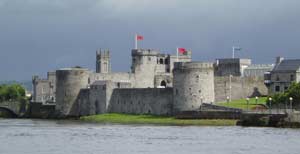
King John’s Castle was built in 1200 and completed in 1210. While many castles in Ireland have been reduced to ruins over the centuries, King John’s still stands strong.
It is on King’s Island on the River Shannon. It was built by King John when the Normans took control of the city. After the Normans invaded Ireland, Domnall Mór Ua Briain, the King of Thomomd took the drastic action of burning the city to the ground in order to prevent the Normans from settling there.
However, following Domnall’s death in 1194, the Normans captured Limerick and the leaders built the castle to protect themselves from Gaelic clans as well as any Norman lords who may rebel.
It was the scene of the first of many mid-17th century Sieges of Limerick in 1642. The castle was badly damaged during the siege.
The castle has a multimillion euro visitor centre that includes exhibitions and activities that teach visitors about its history.
The Treaty Stone
The Treaty Stone is a block of limestone by Thomomd Bridge that crosses the Shannon, opposite King John’s Castle.

The stone is a monument to the Treaty of Limerick which ended the Williamite War in the late 17th century. The war was fought between the Protestant William of Orange and the Catholic King James II.
The war finished after the second Siege of Limerick. The Catholics had already successfully held off a siege from William’s men in 1690.
However, the following year William’s men took Galway and morale among the Catholics was low. When they returned to Limerick, the Catholics surrendered with favourable terms.
The Treaty that was written that day is said to have been written on the stone. The stone has been placed high on a pedestal since 1865 to prevent people from taking pieces of it.
Because of the Treaty, Limerick has sometimes come to be known as the ‘Treaty City’.
The Hunt museum
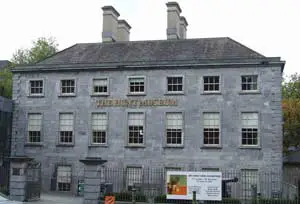
The Hunt museum is in an 18th century custom house in the centre of Limerick. It is named after the Hunt family who donated several items that are still in the museum’s collection.
The museum has around 2,000 pieces from both Ireland and overseas. The most significant section is the Irish medieval collection. Here you will find the fifteenth century O’Dea Mitre and Crozier.
Elsewhere in the museum is a large bronze horse, rearing on its back legs. For a long time the horse was thought to have been designed by the great Leonardo da Vinci.
However, disappointingly, this was proved not to be the case in 2009 when an international research team said it was likely to have been cast in the 18th century rather than the 15th.
St John’s Cathedral
St John’s Cathedral was built in 1861 and has been in continuous use to this day. It has the record for having the highest spire in Ireland at 94 meters (308 ft). It is located near to the Milk Market.
St Mary’s Cathedral
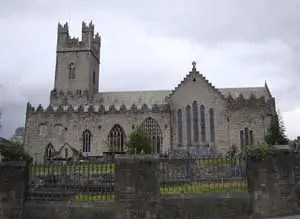
St Mary’s Cathedral was founded in 1168 and is the oldest building in Limerick that is still in everyday use.
It is built on the site of the palace of Domnall Mór Ua Briain, King of Thormond. It has the only complete set of misericords in Ireland. A misericord is a small wooden shelf that is designed to help someone stand upright for long periods of prayer.
It is said that during the many sieges of Limerick the people would use the stones of the cathedral to sharpen their swords to help them better defend their city.
In the mid-17th century, Oliver Cromwell’s men captured Limerick and the cathedral came to be used as a stable by the parliamentary army.
The British troops removed a 13 ft Pre-Reformation high altar, which wasn’t reinstated until the 1960s. It is the largest alter in the islands of Ireland and Britain.
There are cannonballs in the Glentworth Chapel that were used to attack the cathedral during the Williamite War in 1691. There was significant damage done to the walls. However, following William’s victory, he granted £1,000 towards repairs for the Cathedral.
There was a five year restoration project from 1991-96, and today the cathedral is open six days a week to visitors.
The People’s Park
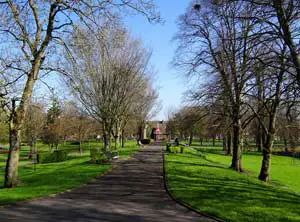
The People’s Park is a large public park near to Pery Square. In the summer it is a great place to spend a few hours getting away from the hustle and bustle of the busy city.
The park has been described as an oasis in the middle of the city and contains a number of beautiful flower displays and trees.
Many people enjoy taking a walk along the pathways in the park, while it is also a good place to settle down with a good book or to simply watch the world go by.
There are a number of interesting landmarks in the park including a children’s play area, a 19th century band stand, an ornate drinking fountain, two gazebos and a memorial to Thomas Spring Rice, MP for Limerick in the 19th century, which stands on top of a huge pillar.
The Milk Market

The Milk Market is a marketplace set up under a large futuristic canopy. The market won the Irish Architecture Award 2011.
The exact age of the market is unknown but it is estimated to have been established in the mid-19th century.
While it is called the Milk Market, there is actually a large and diverse range of food and drink available. It includes organic fruit and veg, chutneys, fish, bread, cheese and juices.
The top has been used to host pop and rock concerts. Artists who have performed there include the Saw Doctors, Calvin Harris, Imelda May, the Coronas and many more.
Find out more about the Milk Market
Limerick City Gallery of Art
Limerick City Gallery of Art contains permanent collections of 18th, 19th and 20th century artworks.
The gallery is in a Romanesque Revival building on Pery Square. It was built in 1906 as a Carnegie library and museum and the art collection was established in 1936.
The Gallery also has a number of events and exhibitions every year. It is worth checking the website to see what the gallery has coming up.
Sylvester O’Halloran Bridge
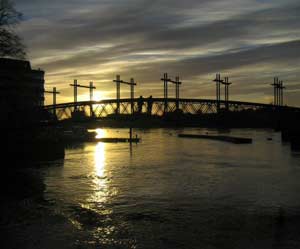
The Sylvester O’Halloran Bridge crosses the River Shannon. It is named after the respected Irish surgeon who was elected a member of the Royal Irish Academy in 1787.
Dr O’Halloran had taken an interest in joining the priesthood. However, after leaving university, he set about trying to help people who were suffering from premature blindness.
In 1761, Dr O’Halloran founded County Limerick Infirmary and in 1773 he helped to establish a lie-in hospital for pregnant women.
Angela’s Ashes tour
Visitors can take an ‘Angela’s Ashes’ tour of the city. Angela’s Ashes was a book by Frank McCourt that recounts his childhood and time as young man in Limerick. The tour takes in many of the places McCourt mentions in the Pulitzer Prize winning book.
Tourists will also be able to find historical walking tours and boat tours along the River Shannon.
Ballyhoura Mountains
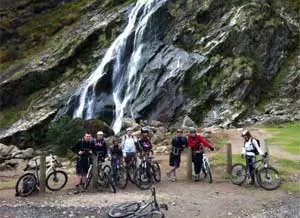
Ballyhoura is a short drive away from Limerick. The Ballyhoura Mountains are in south east Co Limerick and continue into Co Cork. It is a perfect place for hikers and mountain bikers.
There is plenty for people who want to exert a bit of energy and take in the countryside. Activities include mountain biking, walks, clay pigeon shooting, horse trails and taking various tours of the area.
It has the largest trail network in Ireland. There are several walks including the Nature Loop Walk, the Castle Gale Loop Walk, the Clare Glens Loop Walk and many more.
Cyclists can hire a mountain bike and go exploring along the many trails in the area.
It is also home to places of interest such as the De Valera museum, Glenstal Abbey, and Doneraile Court. More about Ballyhoura
Lough Gur
Lough Gur is a lake in Co Limerick, near the town of Bruff. It is one of the county’s beauty spots and a great place to take an afternoon trip.
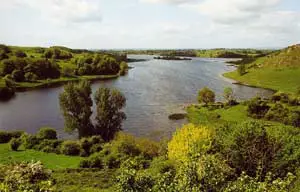
The lake is in a huge ‘L’ shape and is surrounded by hills, countryside and areas of woodland. A site called ‘Grange Stone Circle’ is near the lake. It is the largest stone circle in Ireland.
People have lived in the area for around 5,000 years and it is therefore one of Ireland’s most important archaeological sites. There are several megalithic remains of ancient tools around the surrounding area.
There are a number of ring forts, as well as the remains of stone age houses.
There is a visitor centre and car park near to the lake. There is a picnic area which provides a tranquil place to get away from the city. Many people also like to swim in the lake and even take part in various water sports, although motorised craft are banned on the lake.
Limerick nightlife
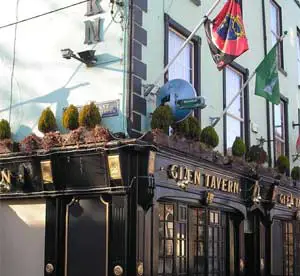
There are a number of options for people who want to unwind at night after a long day of tourism. Limerick has several bars and restaurants that cater for many different tastes.
There is a diverse range restaurants so whether you are in the mood for Indian, Italian, Chinese, Tex-Mex, or just good old Irish pub grub you will be find somewhere to eat.
A number of bars have live bands. People who fancy a bit of traditional Irish music may head to Nancy Blakes.
Dolan’s pub is a live venue for many international bands. During the day it is also a good place to go to take the weight off your feet and have a bite to eat.
Sports fans are well catered for at the Glen Tavern, while Irish whiskey lovers should head to the Michael Flannery pub.
Anyone who want to keep the party going into the early hours may want to try Icon at Smyths bar. Icon was the winner of Smirnoff’s Battle of the clubs, when the public voted it Ireland’s best nightclub.
People looking to take in a show should check the listings of two theatres – Lime Tree Theatre and Millennium Theatre.
More top attractions in Ireland
Galway named as one of the ‘best trips’ in the world by top American travel magazine